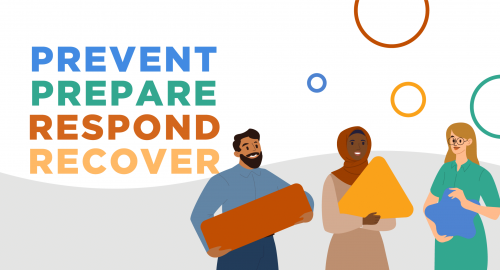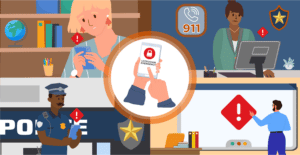Listen to this blog
4 minutes
Raptor’s survey of the National Association of School Resource Officers (NASRO) community has shed light on the multifaceted challenges that educators and safety officers face today and enable us to discuss how those challenges compare with last year’s responses.
This blog will explore these overarching issues before delving into the specific topics that define and drive them. With insights drawn from 275 respondents, we’ll present a narrative that not only captures the current state of school safety across the United States but also encourages a dialogue on its future trajectory in an age marked by innovation and change.
The Raptor 2023 NASRO survey received 275 respondents from 39 states. The following graphs compare the 2023 respondents to 2022’s respondents.
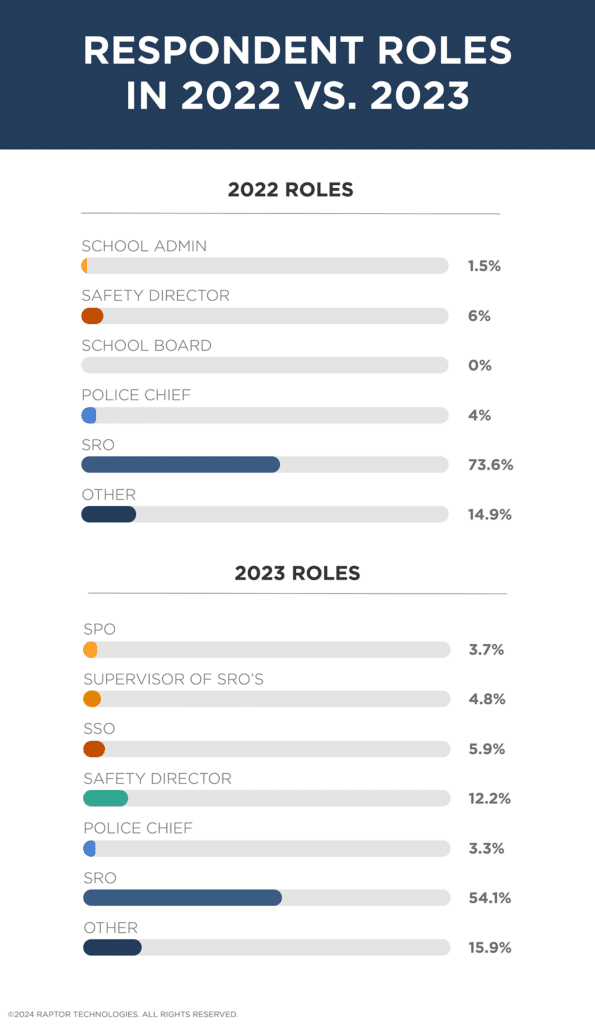
Let’s dive into their responses.
The Big Picture–School Safety Concerns in 2022 and 2023
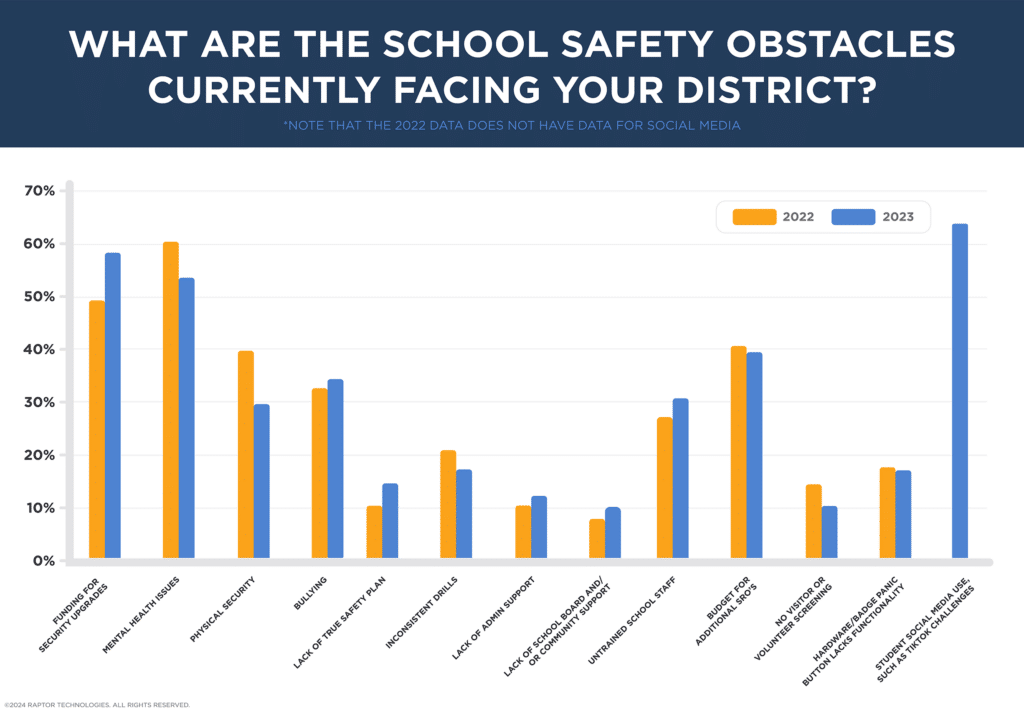
New on this year’s survey and representing the most frequently-named concern among respondents at nearly 64% is the negative impact of social media on school safety and student wellbeing.
Interestingly, nearly 33% of respondents who indicated social media as a concern at their school then also expressed uncertainty about the impact of artificial intelligence (AI) on school safety.
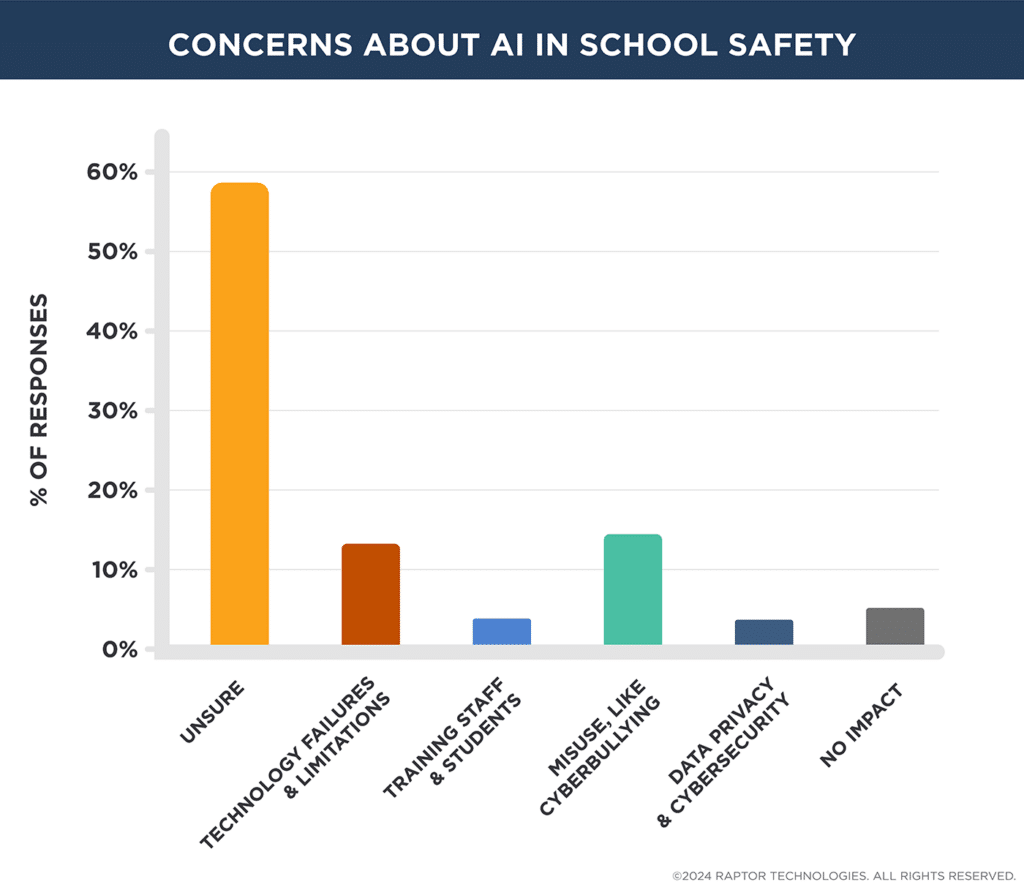
This emerging trend underscores a broader theme observed in the survey responses: a need for a more comprehensive understanding of technological advancements and their effects on school security and student welllbeing. As educators and safety officers navigate these evolving challenges, it becomes imperative to adopt strategies that are not only reactive to current concerns but also proactive in anticipating future developments.
Social media, cyberbullying, predators—and Artificial Intelligence
With a growing reliance on technology for safety protocols and the emerging threats in the digital space, the survey data reveals the need for training related to technology misuse as well as cybersecurity concerns.
Issues like cyberbullying, online predators, and challenges posed by social media platforms like TikTok are becoming increasingly relevant. Let’s take a closer look at the safety concerns rooted in technology.
The pervasive nature of social media had already amplified the risks associated with cyberbullying and online predators. Generative AI, capable of creating realistic images and videos, has further complicated these issues.
This technology can be used maliciously, intensifying cyberbullying and online predation. The FBI highlights a disturbing rise in sextortion incidents among school-aged children, with technology facilitating new methods for perpetrators to exploit children. The psychological impacts of these threats are profound, leading to increased anxiety, depression, and even suicidal ideation in victims.
Recognizing signs of distress in students is crucial for early intervention—as is a centralized platform for staff to share their concerns with counselors and trained staff.
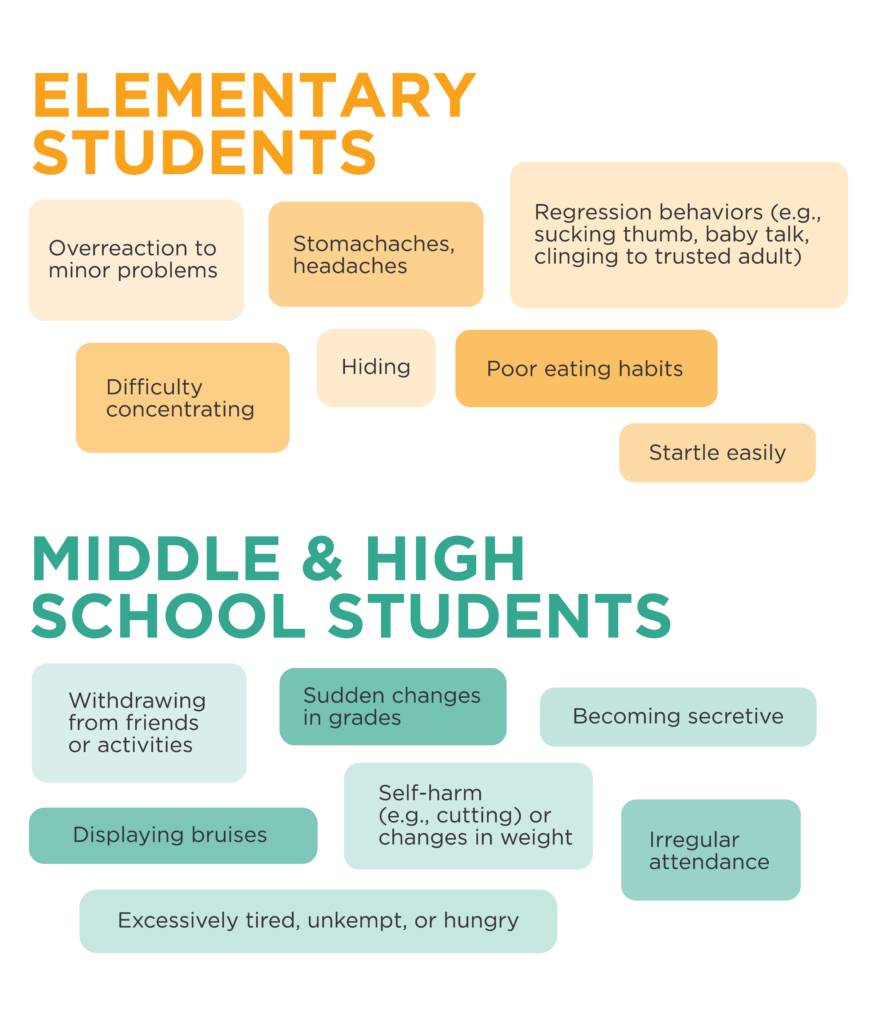
The unregulated environment of AI-generated content leaves educators grappling with new forms of cyberbullying and online threats. Proactive measures are essential, including tools that enable staff to collect and analyze data on student behavior. These tools can help in early identification of issues and ensure timely interventions, thus preventing situations from escalating and maintaining students’ academic engagement.
A Need for Further Mental Health Training
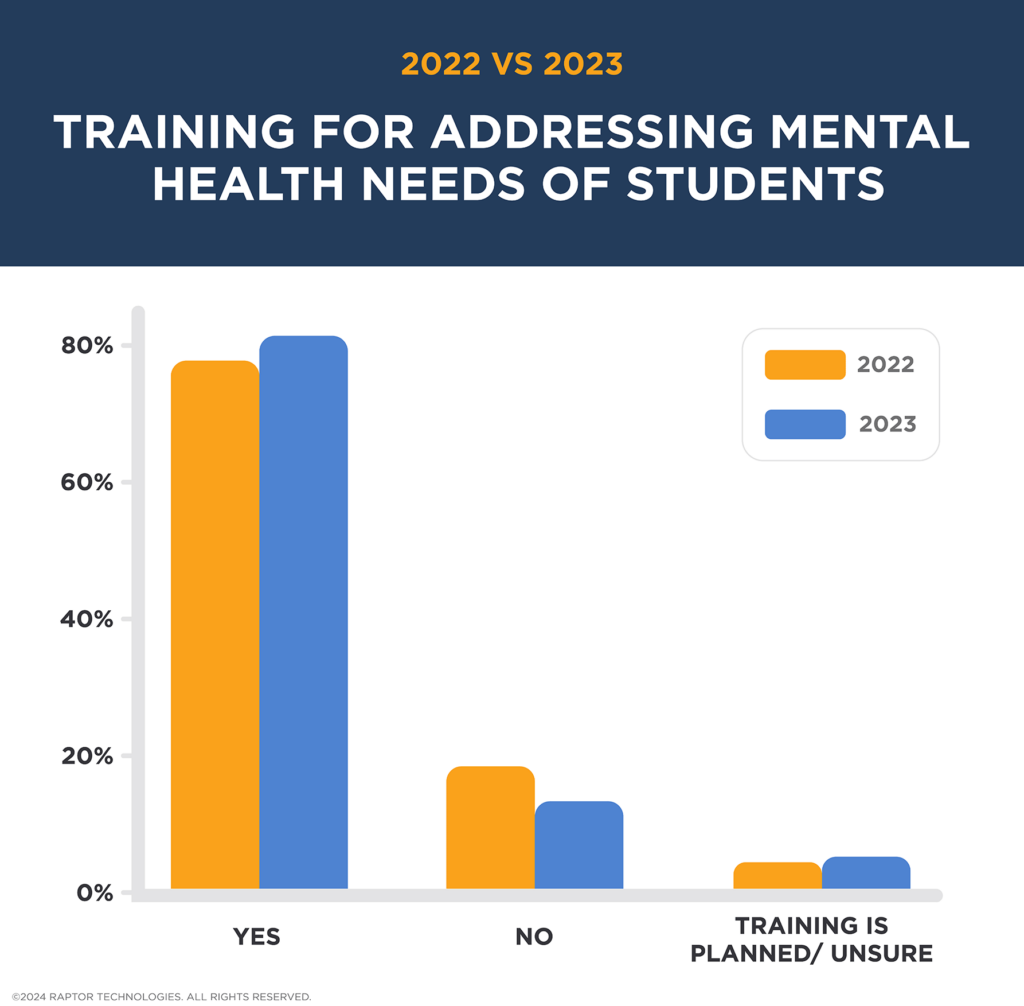
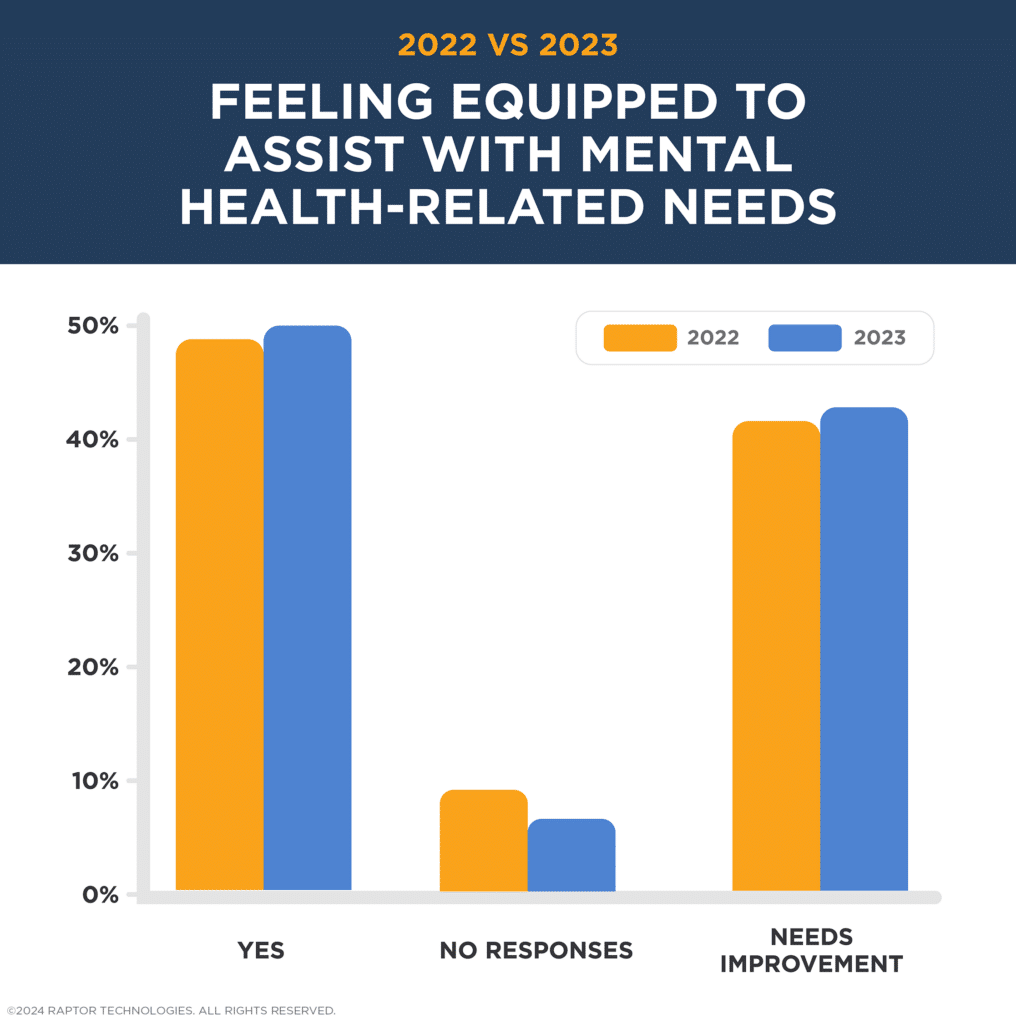
Despite the positive data related to respondents’ access to training related to supporting students’ mental health needs, comparative data highlight the need of additional training.
The increasing sense of feeling under-equipped on mental health training indicates a gap that needs addressing to ensure a uniform approach to mental health across schools.
While respondents largely indicated the presence of school counselors’ availability to support students, it’s worthwhile to note that student wellbeing is multifaceted. This makes it critical that every member of a school’s personnel needs to be equipped with recognizing concerning behavior and supporting district efforts in mitigating challenges to student wellbeing.
Ensuring all staff receive appropriate training will improve their sense of preparedness when supporting students’ wellbeing.
Drills, Reunifications, and Collaboration with Law Enforcement
Moving beyond the concerns about the impact of social media on student wellbeing, respondents also shared insight into their drilling practices.
An essential aspect of school safety is the conduct of drills and the process of reunification following an emergency. These drills play a crucial role in preparing schools for emergency situations—and provide schools with the opportunity to collaborate with law enforcement and first responders. The effectiveness of these collaborations, along with the challenges faced, impact the ability of the school and its community to respond to emergencies.
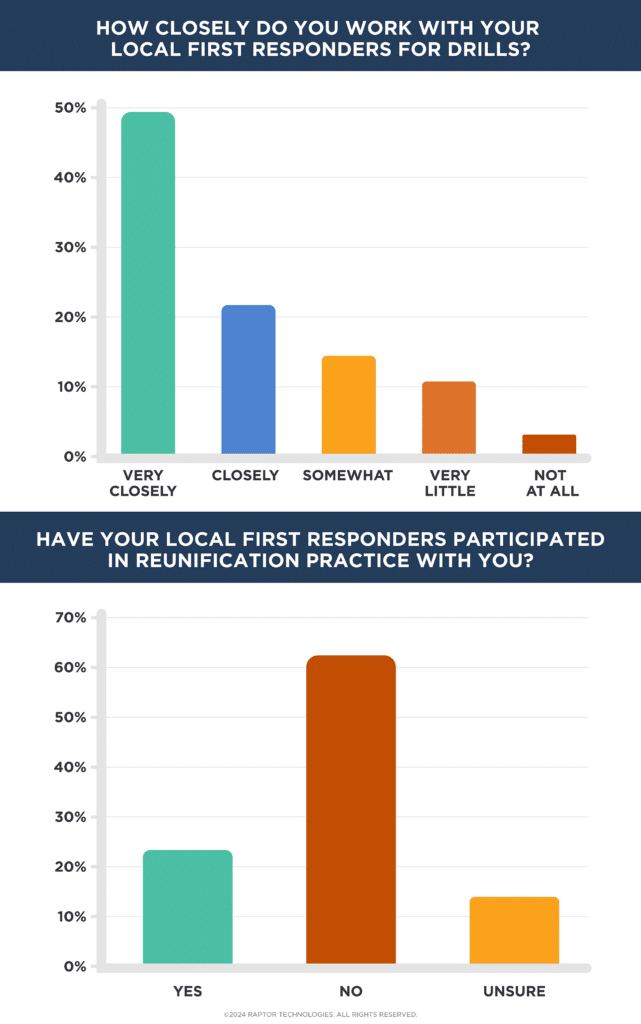
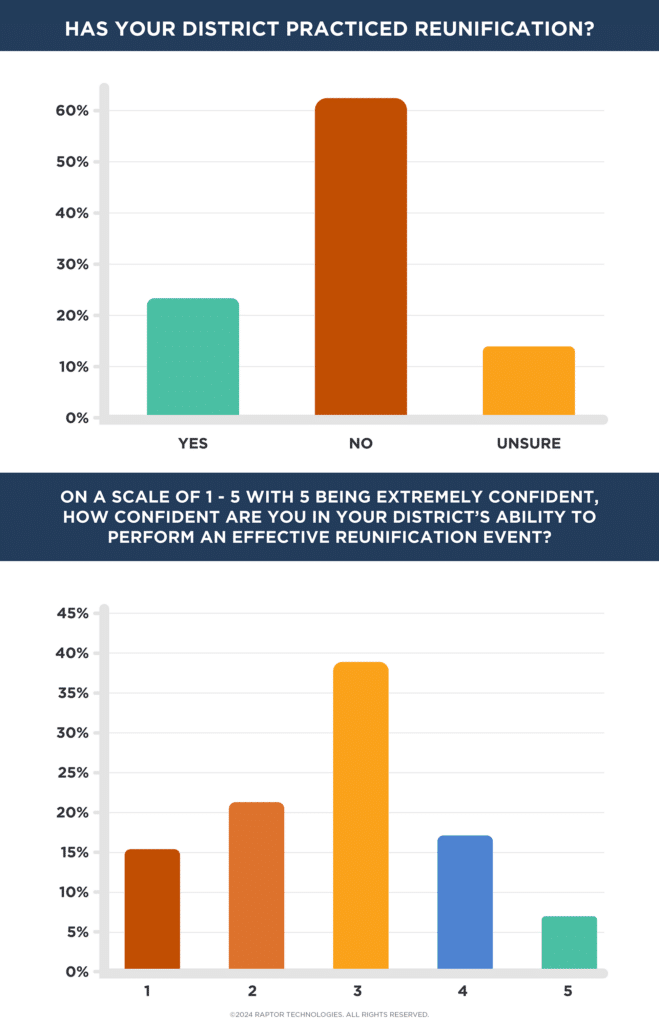
While most respondents indicated a close relationship with local first responders for safety drills, there is an overwhelming majority who indicated a lack of practice when it comes to reunification—whether with or without emergency responders. The result: less than 25% of respondents felt confident in their district’s ability to conduct an effective emergency reunification.
The Path Forward
Enhancing student and staff safety requires a collaborative effort. By integrating advanced training, innovative technology, and comprehensive mental health support, we pave the way for a safer educational environment.
The success of this journey relies on regional partnerships and the sharing of best practices, underscoring the imperative for ongoing dialogue and commitment from all stakeholders. Follow Raptor’s School Safety Today newsletter on LinkedIn to learn about the latest school safety topics.
Together, we can forge a path towards a secure and nurturing educational landscape.
Related Resources
Guide to K-12 Student Wellbeing
Strategies to Recognize, Document, and Support Students in Distress
Listen to this blog
4 minutes

